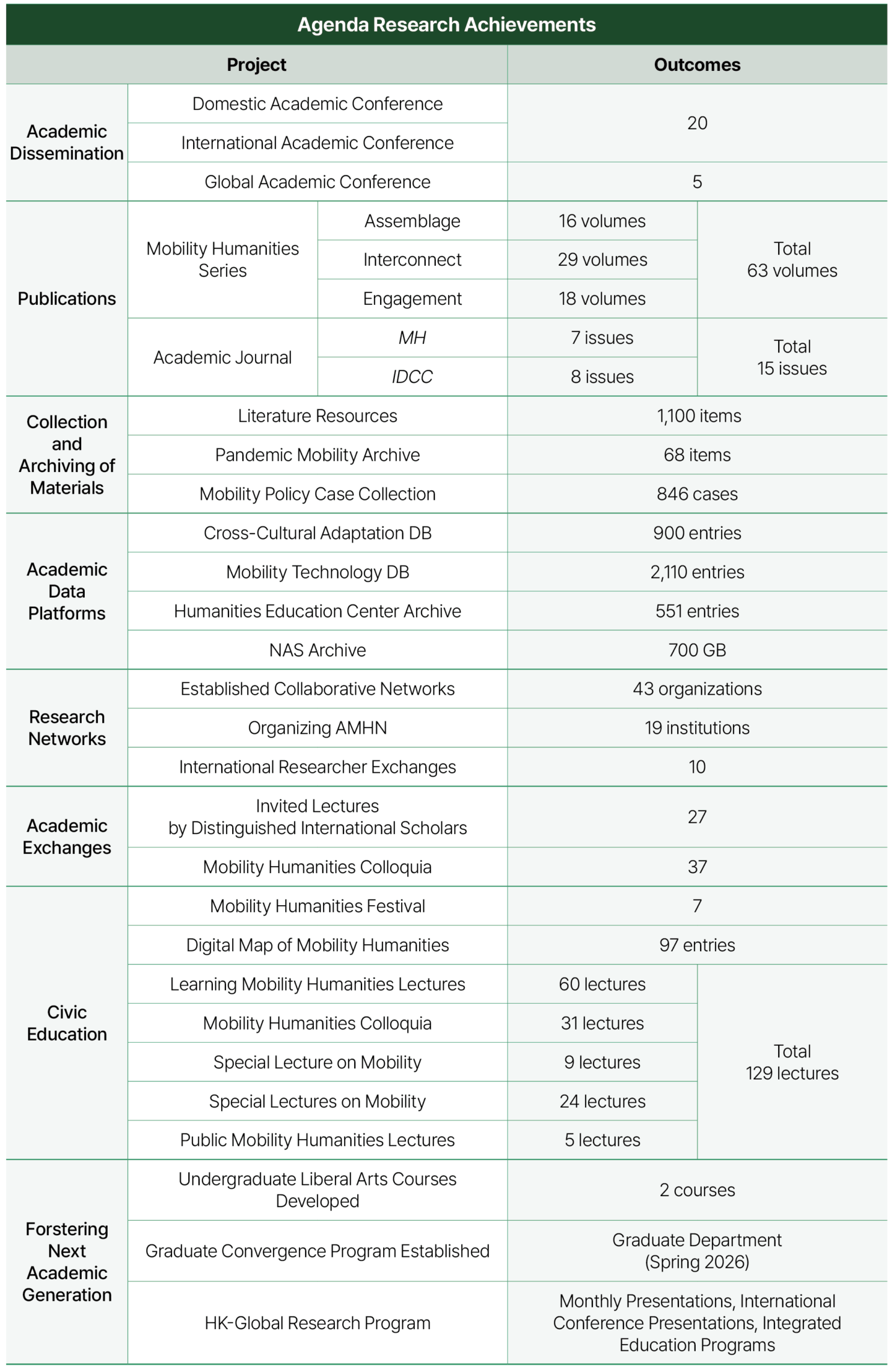Introduction
Mobility Humanities is a field of study that examines the real and virtual movements of people, objects, and relationships brought about by the development of mobility technologies—such as trains, automobiles, airplanes, the internet, and mobile devices—from the perspective of human–technology co-evolution. By proposing humanistic approaches to the current and future challenges emerging with increasingly sophisticated mobilities, it contributes to shaping a mobility-centered humanistic society where life, thought, and culture thrive.
In this research, mobility refers not only to the movement of people, objects, and information enabled by mobility technologies (e.g., trains, cars, planes, the internet, mobile devices), but also to the broader shifts in social relations that accompany such movements. These include changes in spatial (urban) organization and population distribution, transformations in labor and capital, and reconfigurations of power or governmentality.
Today, mobility technologies have advanced to the point where they leave almost no temporal or spatial constraints on the movement of humans, objects, and relationships. The construction of air routes linking countries and regions, as well as wireless communication networks, serve as material indicators of the possibility of unrestricted flows of people, goods, and data. In particular, initiatives such as Google’s Project Loon—aimed at providing free internet worldwide—and the pursuit of space exploration and Mars colonization suggest that mobility will soon transcend even the planetary boundaries of Earth. In this sense, we now live in an era where mobility technologies have become not merely conditions or tools of human life, but another aspect of human nature itself: the era of high mobilities. Put differently, this is a period in which the co-evolution of humans and technologies has intensified into a mutually complementary and co-constitutive relationship.
To think through the era of high mobilities, it is first necessary to move beyond past modes of thought centered on territory and settlement. Earlier discourses on glocalization, decentering, hybridity, deterritorialization, and liquidity were significant attempts to transcend territorialist or sedentary paradigms based on dichotomies such as global vs. local, center vs. periphery, sameness vs. difference, and order vs. chaos. However, those discourses were limited in that they did not sufficiently theorize the role of mobility technologies, treating them merely as secondary tools rather than as substantive actors (agencies) that actively drive glocalization, hybridity, and deterritorialization. Furthermore, contemporary developments such as post-human projects seeking to enhance human capacities through wearable devices and to dissolve the boundaries between humans and machines, as well as the construction of smart cities based on the Internet of Things and cyber-physical systems, position mobility technologies as essential elements not only of humanity and society but also of nature itself. Thinking through these developments requires a fundamental shift in the paradigm of the humanities.
Accordingly, Mobility Humanities seeks to replace the concepts of territory and settlement with that of mobility, while at the same time establishing a new paradigm of thought for designing future worlds through the perspective of human–mobility technology co-evolution.
Research Achievements


